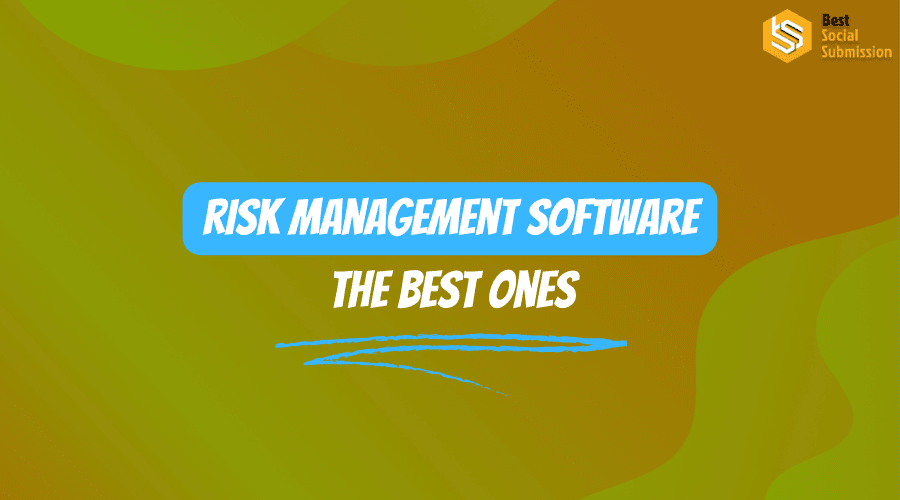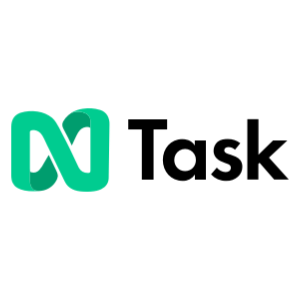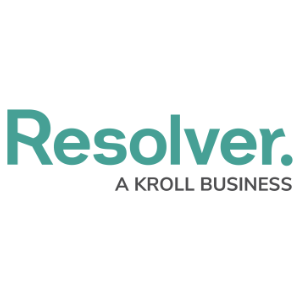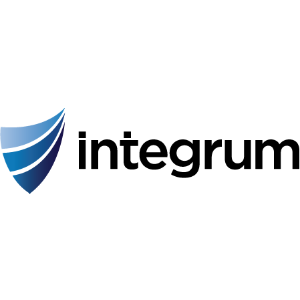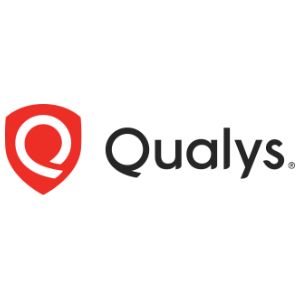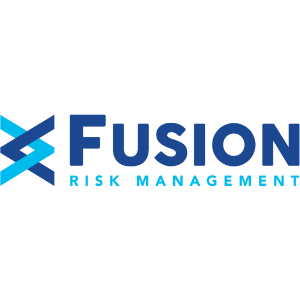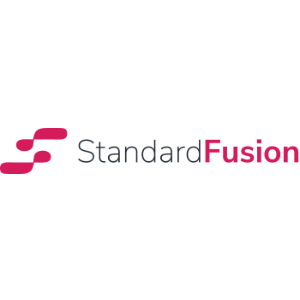They say the more risks you take, the more you gain.
While this may be true in life, it is not always the case in business.
The best business decisions are made by entrepreneurs who take calculated risks – those risks are more likely to work in your favor.
That’s why there are a slew of risk management software companies out there promising complex solutions to manage major risks, but with so much to choose from, it can be difficult to determine which one is best for your needs.
Using project planning software is crucial for moving in the right direction and knowing what actions to take on a day-to-day basis – however, your plans need to factor in the right amount of risk management.
In this article, we’re going to show you the best risk management software available on the market right now, based on their features, customer satisfaction data, pricing, and more.
We will now help you find the best software for your needs.
What is the best risk management software?
Here is my pick of the best risk management software.
1.nTask
nTask is one of the most popular project management software for small businesses that want to keep risk management in mind. It allows teams to collaborate, plan, analyze and manage daily tasks.
It’s ideal when it comes to streamlining a small business, ensuring everyone is on the same page when it comes to risk management.
Features
- Easily manage your tasks on Kanban boards so everyone knows what needs to be done, who is responsible for each task, and where items are in the workflow.
- Visually analyze your business with beautiful graphs to find bottlenecks or even predict results.
- Streamline the use of project risk planning software, task management software, and other tools needed to keep your business running smoothly.
- Be confident knowing you can get everything done in time for deadlines, so you never miss a moment.
Prices
nTask is made up of 4 different payment plans:
- Basic: Free Forever
- Premium: $2.99 per user per month
- Enterprises: $7.99 per user per month
- Company: You must contact them for a quote.
Compared to other software we are going to review, these packages are much more affordable, which means nTask can be a good introduction to risk control in a small business.
2. Resolver
Resolver is a company specializing in risk mitigation for businesses. Resolver gives growing businesses a clear picture of their risks, enabling them to make quick and effective decisions.
These decisions help move their business forward while ensuring the protection of their people and assets. To do this, we offer the most comprehensive enterprise security software suite available today.
Features
- Prevent security breaches so you can focus on growing your business.
- Monitor compliance risks and costs, and keep your customers safe with rapid threat detection and response.
- Report on security risks through compliance insights to track your progress, allowing you to systematically manage all areas of risk across the business.
- Easily perform gap analysis against industry standards to prioritize your efforts.
Prices
You will need to contact the Resolver team to request a demo and get a detailed quote.
3. Integrum
Integrum is a global leader in business management and optimization software. Integrum has transformed the lives of businesses and individuals with its suite of award-winning products, enabling organizations to unlock their potential by transforming data into insight-based decisions.
Integrum’s solutions are designed to help businesses grow more efficiently through automation, process improvement, better visibility and control of the flow of information across the enterprise.
It empowers workers in the field of management science by helping them manage business conditions in real time.
It is also a scalable, flexible and powerful solution for risk management.
Features
- Build a risk profile for each of your clients to stay proactive and provide protection before problems arise.
- You’ll be able to see the data you need in a single dashboard, so you keep all your data up to date and always have the latest version.
- Risk management is made easy with configurable SMARTForms, which allow you to design custom forms tailored to your business.
- Easy-to-understand dashboards that show what matters most, so you’ll be immediately alerted when the data changes.
Prices
Also in this case, you will need to request a demo to experience the software and get more information about the pricing model.
4. Qualys
Qualys is the world’s most trusted cybersecurity solutions provider. It makes it easy to connect, run and manage infrastructure securely, anywhere and on any cloud.
Their patented scanning technology instantly detects vulnerabilities in all your systems, wherever you are and whatever country you operate in.
With Qualys, you can finally see your entire digital footprint and know exactly what needs fixing to protect against hackers, malware, and data breaches.
Features
- Detection of critical vulnerabilities and misconfigurations so you stay on top of any potential risks.
- Continuously and automatically scan your global hybrid environment for critical infrastructure vulnerabilities and malfunctions.
- Receive notifications of zero-day threats, stolen assets, and network anomalies in real time.
- Use the latest threat intelligence, advanced correlation, and sophisticated machine learning to focus on what matters most to your business.
Prices
Although no price is listed on their website, you can try this solution for 30 days without any limit. You can also use it unlimited to understand if it suits your needs.
5. Fusion
Fusion Framework System is the world’s most trusted cloud security company. It focuses on visibility, protection automation and compliance in physical and virtual spaces. It also uses some of the best cloud storage services, which has helped its tremendous growth over the years.
Their innovative technologies provide enterprises with real-time insight into their data center assets, including vulnerabilities, configuration settings, and changes at scale – helping these enterprises achieve resilience faster while reducing risk. risk exposure.
The Fusion Framework system platform offers a simple solution that supports all necessary functionality.
It performs continuous threat risk monitoring, provides vulnerability management, assists in automating remediation, empowers employees to control access rights, enforces the right risk mitigation policies, and ensures regulatory compliance .
Features
- Discover and fix weaknesses in your business before they become problems. You will receive quick, factual and objective assessments of the state of your business.
- Focus on day-to-day business activities while the system executes a thoughtful plan to improve business readiness.
- Reduce the risk of financial loss, legal penalties and brand damage.
- Improve the customer experience by delivering what you promise on time, every time.
- Enjoy peace of mind knowing you’re prepared for whatever your day-to-day operations throw at you.
Prices
You can see the Fusion Framework system live and in action by requesting a demo on their website. They promise to respond to all inquiries within 24 hours of submission.
6. 6clicks.
6clicks is your operating system for risk and compliance. It makes it easy to manage risk registers, review risks, assign accountability, define treatment plans, and more to get you audit-ready and in control faster than ever. .
Their software is a one-stop-shop for all things governance, risk, and compliance. With their intuitive interface designed with simplicity in mind, it’s easier than ever to stay on top of your data security standards.
In addition to being regulatory compliant, 6clicks also helps you stay aligned with industry standards by simplifying the implementation of an Information Security Management System (ISMS).
Features
- Access to world-class risk libraries so that legally mandated risks are factored into your risk register.
- Customize each step of the risk identification, assessment or management process, all within the 6clicks interface.
- Free up resources for larger business risk assessment projects by letting 6clicks take care of your standard risk assessment.
- Have confidence that your business is prepared for any situation that may arise.
Prices
Keeping in mind that organizations have different needs when it comes to their size and security requirements, 6Clicks offers 3 plans.
- Startup: $4,800 per year (plus $450 registration fee)
- Growth: $18,000 per year (plus $950 entry fee).
- Company: Prices given during a live call
7. StandardFusion.
StandardFusion is an integrated risk management software and GRC solution for technology-focused information security teams.
They provide you with the tools to identify, assess and address risks to help your business meet compliance requirements, both internally and externally.
StandardFusion was designed for businesses of different sizes: it’s easy to use and delivers fast results, no matter the size of the business.
Features
- Spend less time struggling with technology tools, so more of your compliance requirements are translated into actionable tasks.
- Know what you need to do before the deadline – tickets can be handled automatically, so you don’t miss important deadlines.
- Get risk, audit, and compliance management in one place, so you can check the status of your compliance requirements, from identification to completion, all in one place.
- Be informed when the audits are due, which gives you time to gather the necessary elements to prepare for the audit.
Prices
With four different price and feature tiers, you’re sure to find the right solution for your business needs.
These are the pricing models offered by Standard Fusion:
- Beginner: $750 per month (plus $2500 onboarding)
- Professional: $1700 per month (plus $5000 entry fee)
- Enterprise: $3,500 per month (plus $8,000 set-up fee)
- Enterprise+: $8,000 per month (plus dedicated implementation)
What is risk management software?
Risk management software is a type of software that helps identify, assess, and address risks in an organization.
This software can be used by technology-focused information security teams as a complement (or the only solution) to traditional risk management processes.
It can also be used by non-technical risk managers who need to track identified risks and how they are assessed and addressed.
These software tools focus on automating common compliance tasks, such as identifying risks, monitoring changes, and reporting on audits.
They come with preloaded content related to certain regulations, like PCI DSS or ISO/IEC 27001, but many companies customize these tools so they can follow specific regulations or industry standards within their organization.
For example, some organizations will use a tool like this to help them comply with HIPAA regulations (in addition to using an electronic medical records system).
Also read : Top 10 Social Media Management Platforms For Businesses
Why is risk management important for an organization?
A risk management methodology involves a process that identifies risks that can affect your business objectives.
This process also involves assessing those risks to determine their impact on those objectives, as well as developing plans to respond to those risks if they materialize.
This process includes protecting against the risk, reducing its impact if it occurs, or jointly transferring or avoiding it.
Let’s take a concrete example. Imagine you’ve spent the past few weeks reviewing a list of the best online business bank accounts to see which offers the best features for your needs.
By using risk management software, you will be able to obtain confirmation that the bank you have chosen is indeed the right choice and that you will not be caught off guard later using the services of this bank.
If you are caught off guard, you may end up paying exorbitant fees to fulfill your obligations.
This is just a simple example, fairly easy to understand. However, the complexity of business risks is usually much higher and less straightforward.
Now extend this concept to an entire organization. Think about the number of departments, people, processes, machines, etc. that is in an organization. Then think about the risks associated with each department, process and machine.
The risks can be as simple as someone forgetting to follow a simple company policy, or they can be much more serious, like data breaches and financial problems.
How can risk management software help?
Risk management software is designed to:
Identify risks quickly and accurately
Get everyone on the same page to easily track all elements of your workflow, from identifying risks to completing corrective actions, so everyone knows what needs to be done next.
This allows you to identify risks at an early stage and spend more time on the more important activities that get things done.
Maximize resources
Risk management is only part of good governance. But, in today’s environment of intense corporate liability, it’s more important than ever to have a strong risk management program in place.
Optimizing resources means being efficient. It’s also about being able to keep up with everything that’s going on within your organization.
It’s not just about having official policies for everything that exists. It’s also about understanding what you need to do to keep your organization secure.
Start a task, then have it automatically assigned once the risk is identified.
Once a task has been initiated, great risk management software constantly assesses what is happening and automatically reassigns tasks when the risk is resolved or its status changes.
This means no more forgetting what needs to be done next.
This aspect of a good system also saves time and ensures that nothing slips through the cracks. If an item requires your attention, it will be sent to you, along with all the relevant information, so that you can move forward on the subject in question.
This helps maintain transparency within the organization, so no one feels isolated or left in the dark.
Automatic tracking of tasks in your organization’s workflow structure
If a process has been defined for the issues that arise, this type of software will allow you to define each step of the process and have the system automatically track each step as it is completed.
Automating this process can save you time and effort, freeing up resources that can be devoted to other areas that need attention.
Integrate your current workflows or create new ones.
Good software will allow you to seamlessly integrate existing systems (like CRM software, project management software, etc.) or create new workflows based on business needs.
This level of flexibility allows any business to benefit from risk management software, regardless of size or industry.
For example, if your company uses many custom applications, risk management software will allow the end user to connect these applications within the workflow so that they know what needs to be done next, regardless of the software from which the request originates.
All of this would be done by mitigating the critical risks that could arise from these integrations.
Centralize your data in one convenient place
Instead of having boxes and folders full of paper reports, sticky notes on screens, and whiteboards full of information (and God knows what else), a great risk management system will allow you to centralize all relevant information in one place: Your computer.
Centralizing everything allows you to get a quick overview of where your organization is at while giving you more time for other things that need your attention.
By implementing risk management software solutions, you should be able to increase the efficiency of your staff in all areas by freeing up resources for other tasks. This should help reduce costs and improve overall productivity, so everyone wins in the long run.
FAQ – Risk Management Software
1. What is the most popular risk management tool?
Before giving an answer, it is important to remember that identifying the right operational risk management tools is a challenge. There are hundreds of options and they all seem to do it slightly differently from each other. As such, defining the most popular ones can be a challenge.
However, some risk management software tools are more popular than others. Besides those mentioned above, we can mention Atlassian, Cisco Umbrella, IBM Resilient, Microsoft 365 Risk Management Software and Threatscape.
Of course, this list is not exhaustive, but it is a good starting point for anyone looking to find out what is available on the market.
2. What type of software should I use?
This question depends on the needs of your organization. If you already have an established workflow, choosing the right system will allow you to leverage those existing systems or even create new workflows based on your specific needs.
The next step is to determine how much control you need over these processes, as risk management software varies widely in this area. For example, some solutions will let you customize everything (down to the smallest detail), while others will only allow limited customization.
Once you have identified your needs and found an appropriate software solution, all you have to do is get everyone on board to use it.
3. How to involve employees?
It is important to invite employees to participate in the process, as this can provide valuable insight into how things work in different departments. This information makes it possible to identify potential risks that would not have been considered otherwise.
Several organizations are even implementing gamification techniques that reward participation by allowing employees to earn badges or other types of recognition that help increase and excel overall engagement.
This is especially important when organizations try to implement new workflows or tasks that require adaptation of existing processes.
By equipping employees with this type of risk management software, they are able to ease the transition into taking advantage of all the solution has to offer (and having fun).
4. What software is used in the risk analysis?
As stated earlier, there are a wide variety of risk management solutions on the market. However, most of them fall into one of two categories:
- Open Source Risk Management Software – Open source options are free to use and also allow for further customization to suit your needs. These types of tools are generally inexpensive and allow you to devote more resources to other areas within your organization.
- Commercial risk management solutions – Commercial solutions tend to be more expensive, although they have a lower initial cost, as prices increase when additional modules or extensions are purchased.
However, these tools often provide faster deployment times as well as increased performance that helps improve efficiency throughout a workflow.
The choice between free software and the commercial solution ultimately comes down to what your organization values most. If you’re looking for the best security solutions at any price, the commercial solution might be the best fit for you.
On the other hand, if time and cost are less important factors, but you still want a good product, an open source solution might just do the trick.
There are many top notch risk management software on the market. Most of them are designed to help you identify existing risks, prioritize them accordingly, and ultimately develop ways to mitigate or turn those risks into opportunities.
5. What are the Features of Enterprise Risk Management Software?
In terms of functionality, many functions are important for risk management. Some SaaS companies integrate compliance programs, incident management, GRC software, ERM software, payroll software, and other important functions into their risk management platform.
The user interface is also an element to consider. User-friendly drag-and-drop features are certainly helpful in facilitating the user experience, but they may not be crucial depending on who will be using the software.
In the end, it all depends on the sector in which the software will be used.
For example, a healthcare organization needs to assess different metrics than a development company when it comes to monitoring risk, and so the risk data that needs to be analyzed will be different.
6. What are the 5 risk management processes?
There are many risk management processes, but there are 5 main steps you need to know:
- Risk Assessment – The first step is to identify existing risks, whether internal or external.
This is often done through brainstorming sessions where employees can provide valuable insight into how their respective departments are working. This can help identify areas of potential risk.
- Transfer – One of the most common ways for organizations to mitigate or transfer these risks is to enter into a contract with an insurance company.
This helps protect both parties involved by shifting that legal liability to another party who is more qualified to handle it.
However, this approach comes at a cost. It is therefore important to weigh the cost/benefit aspects of implementing this type of risk management solution.
- Risk Prevention – Implementing processes and procedures is another way to help reduce or prevent risks from occurring in the first place.
This includes the use of software capable of tracking specific operational risk data points. The organization can then leverage these to derive actionable insights that reduce overall risk levels.
- Internal Audit – Internal audits will allow your organization to test your controls by bringing in outside parties who are independent enough to provide valuable feedback on where your processes/procedures may be failing.
This “outside” perspective allows you to identify areas where you may lack tools, resources, etc.
- Remediation/Prevention – The final step is to take everything you have learned and develop ways to remedy these risks or prevent them from happening again.
As part of this step, it’s important to examine what caused the risk in the first place and think about how you can apply these learnings in your new mitigation plan.
Summary
In conclusion, risk management is an essential part of the continued success of any organization.
By being able to identify, prioritize, and ultimately develop ways to mitigate or transfer these risks, you can use your workforce more efficiently while ensuring an adequate return on investment for your business. company.
To recap, here are my top picks for the best risk management software:
- nTask : Best solution for seamless small business collaboration, within risk management parameters.
- Resolver : Best for an easy-to-use risk management solution that takes your business to new heights.
- Integrum : Best way to use data to improve your decisions
- Qualys : Best solution to quickly move from prevention to detection and response.
- Fusion Framework : Best for Simplifying Complex Risk Management Tasks in Your Business
- 6clicks : Best way to prepare for audit faster than ever
- StandardFusion : Best for risk, audit and compliance management – all in one tool
Finding the right risk management software for you and your organization is the first step to better understanding where to focus your efforts. After all, you can’t manage what you don’t know.
I hope this article has given you a better understanding of how having the right risk management tool can help you identify and prioritize operational risks more effectively. This puts you in a stronger position to make better decisions and ultimately increase your overall return on investment in your business.

